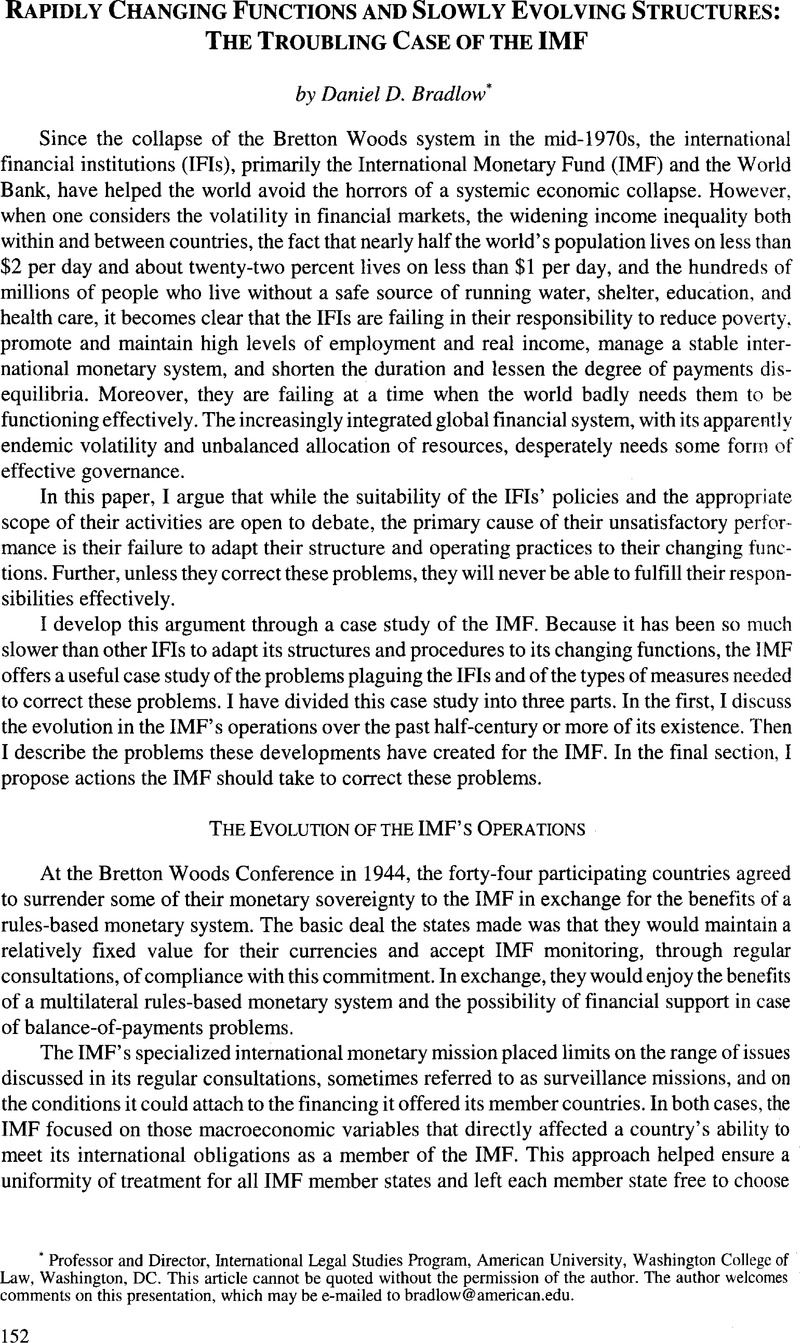No CrossRef data available.
Article contents
Rapidly Changing Functions and Slowly Evolving Structures: The Troubling Case of the IMF
Published online by Cambridge University Press: 28 February 2017
Abstract

- Type
- Meeting Report
- Information
- Copyright
- Copyright © American Society of International Law 2000
References
1 None of these countries have used the financial resources of the Fund since 1978.
2 Despite this, the IMF continues to devote considerable resources to surveillance of these countries. See External Evaluation of IMF Surveillance: Report by a Group of Independent Experts (IMF, Sept. 1999).
3 Since May 1998 the G-7 countries, the United States, Japan, Germany, the United Kingdom, Italy, France and Canada, have been joined by Russia and constitute the G-8. For current purposes, the relevant group is the old G-7 countries.
4 See External Evaluation of IMF Surveillance, supra note 2 ; Report of the Group of Independent Persons Appointed to Conduct an Evaluation of Certain Aspects of the Enhanced Structural Adjustment Facility, (January 13, 1998) (available from IMF).
5 The World Bank’s Inspection Panel serves this function. See, e.g., I. F. I. Shihata, The World Bank Inspection Panel (1994); Bradlow, D. D., International Organizations and Private Complaints: The Case of the World Bank Inspection Panel. 34 Va. J. Int’l. L. 553 (1994)Google Scholar; Bradlow, D. D. and Schlemmer-Schultz, S., The World Bank’s Inspection Panel: A Constructive Step in the Transformation of the International Legal Order, 54 ZaöRV/Heidelberg J. Int’l. L. 392 (1994)Google Scholar.


